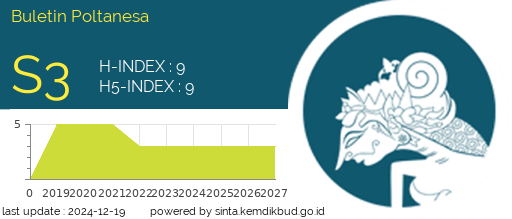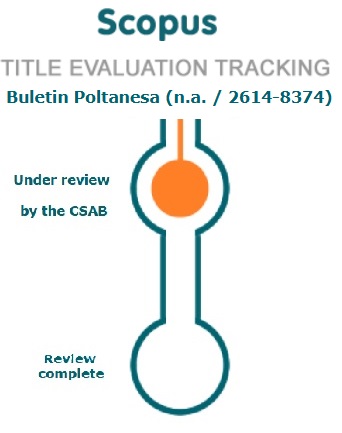Identifikasi Serangan Low-Rate DDOS Berbasis Deep Learning
DOI:
https://doi.org/10.51967/tanesa.v23i2.1737Keywords:
Low-Rate DDOS, Deep Learning, RNN LSTM.Abstract
LowRate DDoS (LDDoS) is a variation of DDoS attack that sends fewer packets than conventional DDoS attacks. However, by sending a smaller number of packets and using a unique attack period, low-rate DDoS is very effective in reducing the quality of an internet network-based service due to full access. On the other hand, the low-rate DDoS with its nature also makes it difficult to detect because it looks more mixed with normal user access. The Deep Learning model that will be used in this research is the RNN LSTM (Long Short Term Memory) model. LSTM is a neural network architecture which is good enough to process sequential data. This model is better than the simple RNN model. The research method is adapted to the SKKNI No. 299 of 2020. However, this research will be carried out until the model development stage, namely the evaluation model. From the results of the research that has been done, it can be concluded that the RNN LSTM model can be used to classify low-rate DDOS attacks using feature selection. The accuracy of the training data on the validation data is around 98% and after visualizing the data for accuracy and loss, it can be concluded that the model is quite good, aka there is no underfitting or overfitting. While the accuracy obtained for testing data is 0.97%.
References
Aljuhani, A. (2021). Machine Learning Approaches for Combating Distributes Denial of Service Attacks in Modern Networking Environments. IEEE Access.
Darryl, P., & Subali, M. (2021). Perbandingan Algoritma SVM dan Algoritma KNN dalam Menghasilkan Klasifikasi DDoS dan Benign. Jurnal Ilmiah KOMPUTASI, 20(https://doi.org/http://dx.doi.org/10.32409/jikstik.20.4.2799), 491-500.
Firmansyah, M. R., & al, e. (2020). Klasifikasi Kalimat Ilmiah Menggunakan Recurent Neural Network. Industrial Research Workshop and National Seminar.
Gupta, B. B., & Dahiya, A. (2021). Distributed Denial of Service (DDoS) Attacks. CRC Press.
Junaedi, R., & Fratelli. (2019). Deteksi serangan DDOS (Distributed Denial of Service) di cloud computing dengan metode rule base.
Li, D., & Li, Z. (2018). A Lightweight Traffic Anomaly Detection Model in SDN Based on Decision Tree. Atlantis Press: Advances in Computer Science Research.
Nugraha, F. A., & al, e. (2020). Analisis Sentimen Terhadap Pembatasan Sosial Menggunakan Deep Learning. Bandung: Kreatif Industri Nusantara.
Nugroho, R. (2022). Foreign Policy (Implementasi, Evaluasi, dan Manajemen Kebijakan). PT. Elex Media Komputindo.
Perez-Diaz, J. A., & all, e. (2020). A Flexible SDN-Based Architecture for Identifying and Mitigating Low Rate DDoS Attacks Using Machine Learning. IEEE Access.
Puspita, H., & al, e. (2022). Pengantar Teknologi Informasi. Sukabumi: penerbithaura.com.
Raharjo, B. (2022). Deep Learning dengan Python. Semarang: Yayasan Prima Agus Teknik.
Rahmatullah, F. (2022). DETEKSI DISTRIBUTED DENIAL OF SERVICE (DDOS) DALAM JARINGAN SOFTWARE DEFINED NETWORK DENGAN METODE SUPPORT VECTOR MACHINE. Yogyakarta: UPN "Veteran".
Riadi, I., Umar, R., & Aini, F. D. (2019). Analisis Perbandingan Detecsion Traffic Anomaly Dengan Metode Naïve Bayes dan Support Vector Machine (SVM). ILKOM Jurnal Ilmiah.
Sarno, R., & al, e. (2022). Machine Learning Deep Learning Konsep dan Pemrograman Python. Penerbit: ANDI.
Shandi, M. G., & al, e. (2020). Penerapan Long Short Term Memory untuk Memprediksi Flight Delay pada Penerbangan Komersial. Jurnal RESTI (Rekayasa Sistem dan Teknologi Informasi).
Sudar, K. M., & Deepalakshmi, P. (2022). Flow Based Detection and Mitigation of LowRate DDOS Attack in SDN Environtment Using Machine Learning Techniques. IOT and Analytics for Sensor Networks, Lecture Notes in Networks and System, 193.
Sultana, N., & al, e. (2018). Survey on SDN based Network intrusion detection system using machine learning approaches. Springer Science + Bussiness media.
Swe, M. Y., & al, e. (2021). A Slow DDOS Attack Detection Mechanism using Feature Weighing and Ranking. Proceedings of the 11th Annual International Conference on Industrial Engineering and Operations Management (p. 4500). Singapore: IEOM Society International.
Valdinos, I. A., Perez-Diaz, J. A., Choo, K.-K. R., & Botero, J. F. (2021). Emerging DDOS attack detection and mitigation strategies in software-defined network: Taxonomy, Challenges and Future Directions. ELSEVIER:Journal of Network and Computer Applications, 187.
Valdinos, I. A., Perez-Diaz, Y. A., Cho, K.-K. R., & Botero, J. F. (2021). Emerging DDOS attack detection and mitigation strategies in software-defined network: Taxonomy, challenges dan future directions. ELSEVIER:Journal of Network and Computer Applications.
Zhijun, W., & al, e. (2020). Low-Rate DoS Attacks, Detection, Defense, and Challenges: A Survey. IEEE Access, 43920 - 43943.
Downloads
Published
How to Cite
Issue
Section
License
The copyright of this article is transferred to Buletin Poltanesa and Politeknik Pertanian Negeri Samarinda, when the article is accepted for publication. the authors transfer all and all rights into and to paper including but not limited to all copyrights in the Buletin Poltanesa. The author represents and warrants that the original is the original and that he/she is the author of this paper unless the material is clearly identified as the original source, with notification of the permission of the copyright owner if necessary.
A Copyright permission is obtained for material published elsewhere and who require permission for this reproduction. Furthermore, I / We hereby transfer the unlimited publication rights of the above paper to Poltanesa. Copyright transfer includes exclusive rights to reproduce and distribute articles, including reprints, translations, photographic reproductions, microforms, electronic forms (offline, online), or other similar reproductions.
The author's mark is appropriate for and accepts responsibility for releasing this material on behalf of any and all coauthor. This Agreement shall be signed by at least one author who has obtained the consent of the co-author (s) if applicable. After the submission of this agreement is signed by the author concerned, the amendment of the author or in the order of the author listed shall not be accepted.









